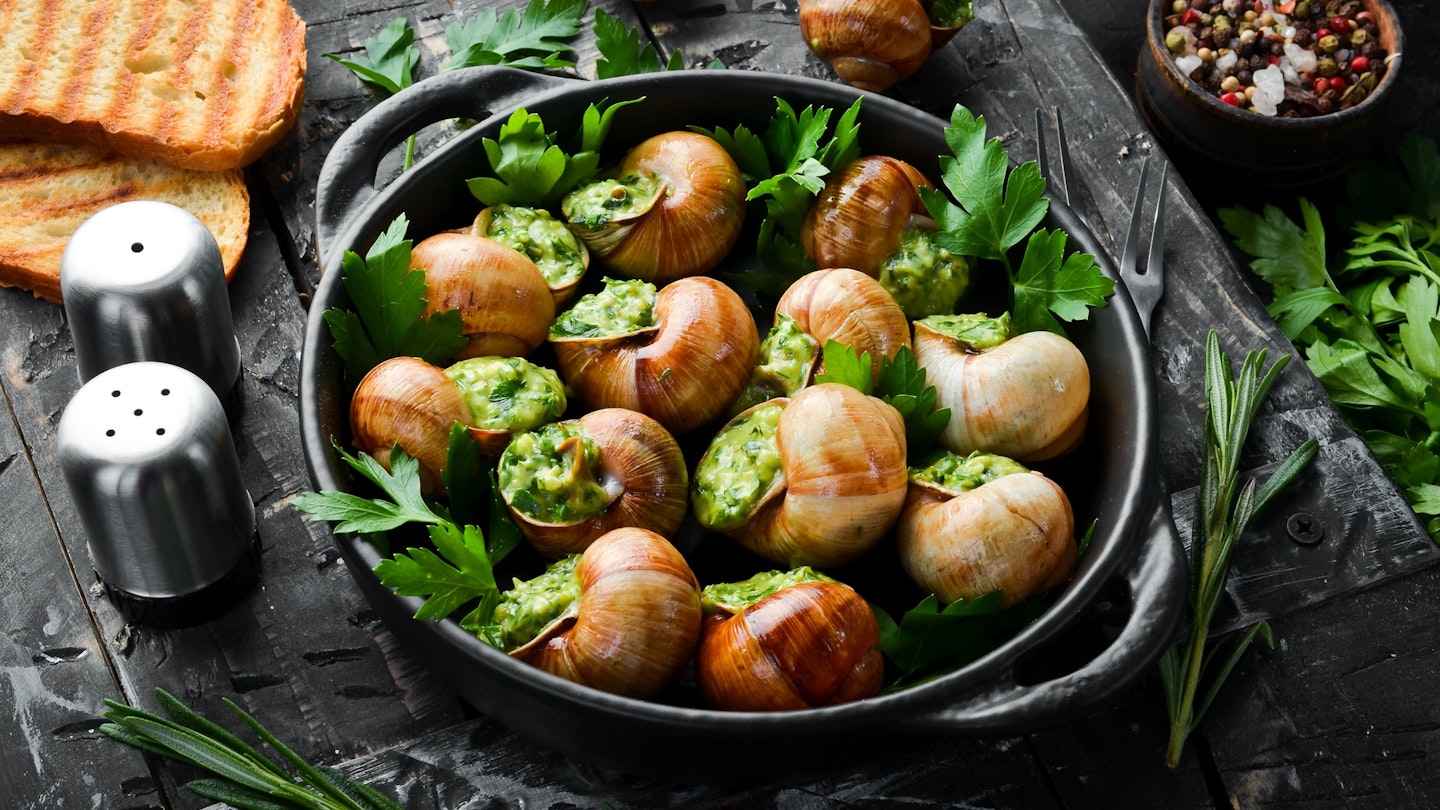Gastronomy in Burgundy: A Culinary Journey
With a natural larder of fertile fields, lush pastures, wooded valleys and rolling hillsides of vineyards, Burgundy encapsulates the best of France for epicureans.
Here, prized poultry, beef, snails, truffles, mustard, cheeses, blackcurrants, honey, and gingerbread shine alongside some of the finest wines on earth in memorable dining experiences ranging from markets to Michelin-starred meals.
At the heart of Burgundy’s sublime food and wine is the terroir – the distinct characteristics of the land’s geology, geography, and climate that provide unique flavors and quality to its produce and products.
Markets of Burgundy
Farmers, artisans, and purveyors bring their wares to lively morning markets throughout Burgundy’s towns, cities, and villages. Browsing stalls piled high with fresh fruits, vegetables, meats, fish, cheeses, breads, and delicacies is one of Burgundy’s greatest pleasures.
Dijon’s 19th-century wrought-iron covered market, open Tuesday and Thursday to Saturday, is a national monument. In the Côte d’Or (“Golden Hillside”) winegrowing region, Beaune has markets on Wednesday and Saturday. Mâcon, the hub of the Mâconnais vineyards, hosts its market on Saturday, while Chagny’s Sunday market is renowned for its quality.
Specialty markets include marchés aux truffes (truffle markets) dedicated to the region’s precious truffles, held annually in several towns across Burgundy such as Noyers-sur-Serein and Nevers.
Gastronomical Culture
Quality produce, skilled cooking, and the act of savoring it are integral to the “French gastronomic meal,” recognized on UNESCO’s intangible cultural heritage list in 2012.
At Dijon’s Cité Internationale de la Gastronomie et du Vin, culinary-themed exhibitions and cultural activities celebrate this renowned gastronomical heritage. The site includes a gourmet bookshop, specialty shops, the largest wine cellar in Europe, a prestigious wine school, and a culinary school offering workshops, classes, and demonstrations for all levels.
Cooking Courses in Burgundy
For those eager to master the local cuisine, numerous opportunities exist across Burgundy. You can explore markets in Beaune at Cook’s Atelier, or head to the 17th-century kitchens at Château d’Ancy-le-Franc, where culinary adventures await.
Burgundy’s Best-Loved Dishes
Burgundy offers diverse dining venues, from rustic traditional restaurants to contemporary Michelin-star establishments. Don’t miss the region’s most iconic dishes:
- Gougères: Fluffy, hollow puffs made from choux pastry and cheese, often enjoyed with an apéritif.
- Escargots de Bourgogne: Plump Burgundy snails, served in shells stuffed with garlic, parsley, and butter.
- Œufs en Meurette: Poached eggs in a rich red-wine sauce with hints of mushrooms and lardons.
- Bœuf Bourguignon: A hearty stew of Charolais beef slow-cooked in robust Burgundy red wine.
- Poulet Gaston Gérard: Chicken cooked in white wine, featuring Bresse birds and Dijon mustard.
Dijon Mustard
Mustard has shaped Burgundy’s culinary landscape since Roman times. Moutarde de Dijon emerged in the mid-18th century and is renowned for its unique flavor, traditionally made by family-run companies still operating today.
Burgundy Cheeses
For cheese lovers, Burgundy’s AOC/AOP cheeses, such as Époisses, Charolais, and Mâconnais, are a must-try. Additionally, Abbaye de Cîteaux offers a soft raw-milk cheese made by monks, reflecting the region’s rich dairy heritage.
Sweet Burgundy Treats
Dijon’s pain d’épices has been a staple since the French Revolution, a local gingerbread variation still made today. Don’t miss nonnettes – traditional gingerbread and honey cakes filled with various flavors like marmalade and chocolate.
Blackcurrant, known locally as cassis, plays a prominent role in desserts and drinks throughout Burgundy. Visit Cassissium in Nuits-St-Georges to explore this distinct local flavor, paired perfectly with regional specialties.
As you journey through Burgundy, immerse yourself in the region’s vibrant culinary scene that combines tradition, quality, and passion for food.




